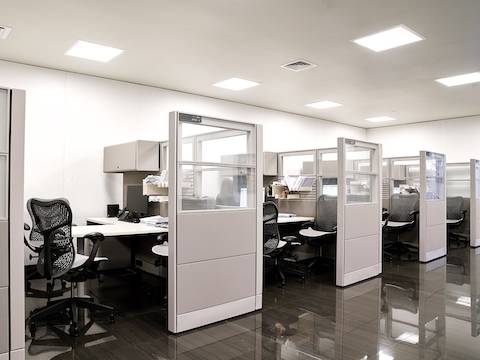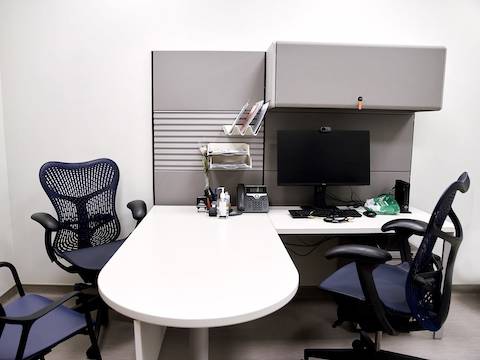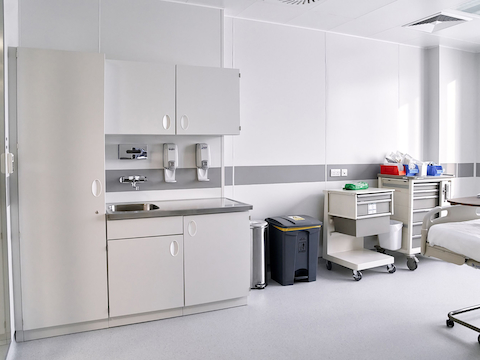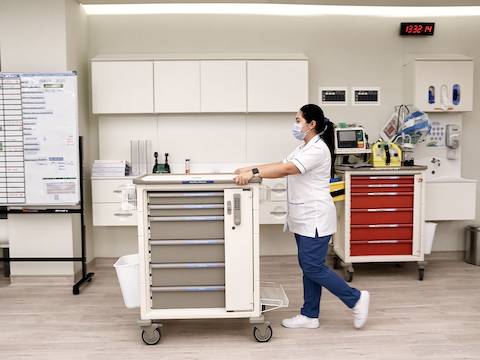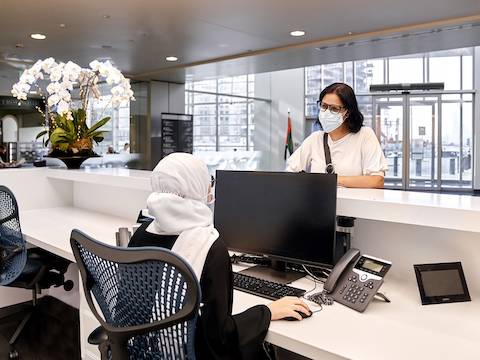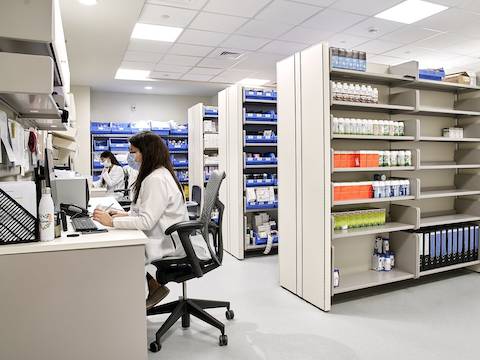Better Experiences for All
How a health system built a supportive environment focused on staff and patients
Case Study: Clemenceau Medical Center, Dubai, United Arab Emirates
Download PDF (1.99 MB)
Healthcare facilities have never been more important than they are now. That’s why the newly designed, state-of-the-art Clemenceau Medical Center (CMC) facility in Dubai is a welcome addition to the emirate. CMC has healthcare facilities in Lebanon and throughout the Middle East and is steadily expanding—and not just in the region; the organization hopes to establish a footprint internationally.
“Our vision was (and is) to create top-tier healthcare facilities for the whole region,” says John-Aziz Maalouf, Engineering and Projects Manager, CMC, Dubai. “We aspire to create spaces with a hospitality look and feel but that are also well geared for healthcare. We pride ourselves on giving patients an elevated experience.”
Designing a better experience
Underpinning a patient’s experience in any healthcare facility are processes and people. The more efficient the medical processes, the easier it is for staff to do their jobs. This is something CMC adopted from the get-go, and it drove their desire to create a facility that would be “adaptable to the needs of staff, [so that] our care team is able to be more efficient in care delivery, which gives them more time to focus on the needs of patients,” says Rola Hammoud, Chief Medical Officer, CMC, Dubai.
Streamlining the process to improve efficiency
With their goal of making the staff’s processes as efficient as possible and delivering first-class patient services, CMC quickly realized they would need to invest in the right equipment—not only medical devices, but also furniture. For this reason, they brought Herman Miller and UAE office furniture provider Advanced Business Concept (ABC) on board right from the start.
“By consulting Herman Miller on the drawings and receiving an entire floor plate proposal, we were able to streamline a lot of the construction process, from schematic design to procurement. A single point of contact made communication, planning, and execution more efficient in meeting the project schedule and cost targets,” says Maalouf.
“ABC was instrumental during the construction phase. They also helped us repurpose and redesign some areas of the hospital during installation, including customizing the nurses’ stations,” he adds.
Creating adaptable spaces for the future
To optimize operations, CMC tasked Herman Miller and ABC with delivering functional, flexible, and future-proof furniture solutions that would put people first.
Herman Miller’s Compass System was key here. Featured in all patient rooms and staff spaces, Compass is thoughtfully designed for infection control and equipped with accessible and ergonomic storage options. Thanks to interchangeable components, the modular casework components that make up Compass “are geared for change,” says Maalouf.
“The supply storage solutions can be integrated with transportation systems to minimize material waste and increase efficiency. Compass has shown great resiliency in all environments. Its modular and seamless design combines aesthetics, function, cleanability, and infection control in one solution,” adds Maalouf.
In addition, Zeina Khouri, Chief Clinical Executive–Interim GM, CMC, Dubai, says, “Supply carts have given us a mobile solution that offers easy access to supplies and medications when and where needed.”
Improving Workflow
Alongside Compass, Co/Struc System has also been invaluable in ensuring efficient operations at CMC. Providing lab and pharmacy workspace solutions that can adapt to changing hospital processes, Co/Struc combines easy-to-clean, durable surfaces, featuring height-adjustable tables and casters for flexibility, with modular storage elements.
“Co/Struc has integrated very well into the lab and pharmacy design,” says Maalouf. “Our pharmacies are fully automated, and the system is catering to all manners of tasks, workflows, and staff needs. What gives me peace of mind is that I know both modular systems—Compass and Co/Struc—will offer me the flexibility and the speed of response I need, should we decide on any space repurposing or reconfigurations.”
Delivering better care
The furniture and the spaces support the staff in delivering the best possible care. “Our new facility includes workspaces that encourage communication and learning among staff. When people can collaborate more easily, we can eliminate mistakes and provide better outcomes for patients,” says Hammoud.
“The way the hospital and the different floors were designed is amazing. They combine functionality, ergonomics, and aesthetics. This is bringing a solid improvement in efficiency and workflow—something that’s critical for us,” says Khouri. “For example, the nurses’ station supports the work of our staff in team environments. When there’s a lack of teamwork and organization among nursing staff, it affects care delivery, patient safety, and unit operations. So this is vital.”
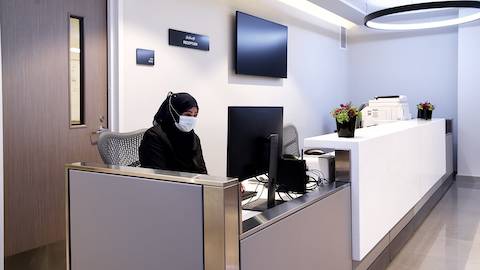
“The new respite space has helped us address burnout and fatigue, thanks to its inviting atmosphere and the comfort it provides. Having such spaces helps us disconnect from our day-to-day, so we can then better serve patients,” she continues.
Creating a hospitality experience
Of course, it wasn’t just the staff experience that mattered to CMC. They wanted to create a hotel-like atmosphere for patients and their families, too.
This meant taking a patient-centric approach to everything from reception areas and patient rooms to emergency rooms, labs, and pharmacies. Each patient room is spacious, many with large, floor-to-ceiling windows. There’s space for families to lounge on sofas, relax, or get work done in fresh, clean-lined surroundings. Comfortable, well-appointed patient waiting rooms also provide comfort for family members and facilitate work while they wait.
From the point of entry into the hospital—the slick reception area, equipped with sleek Mirra 2 chairs for reception staff—“Patients feel they are checking into a five-star hotel. A major change, I would say, from how it used to be,” says Khouri. “The patient rooms look like hotel rooms, with technology integrated to connect the patient with their families. Also, the new rooms are spacious and cleverly designed to accommodate visitors.”
As Khouri points out, “It’s known that minimizing stress and anxiety levels contributes to the healing process. And patients are less anxious entering premises like this, because of the welcoming atmosphere and the state-of-the-art design and furniture.”
In Hammoud’s view, CMC and Herman Miller share the same design philosophy. For both organizations, it all starts with people. Herman Miller’s approach to design is human-centered, research-driven, and problem-solving—and for CMC, that resonates deeply as well.
